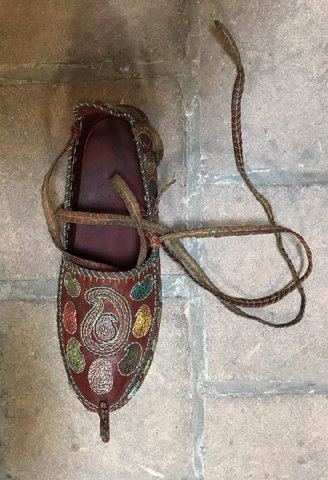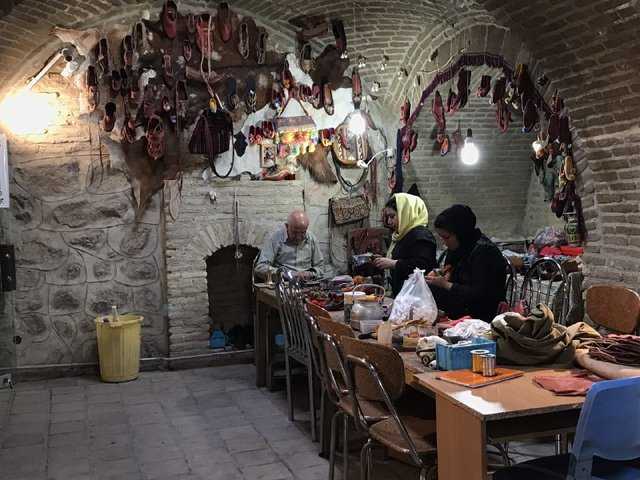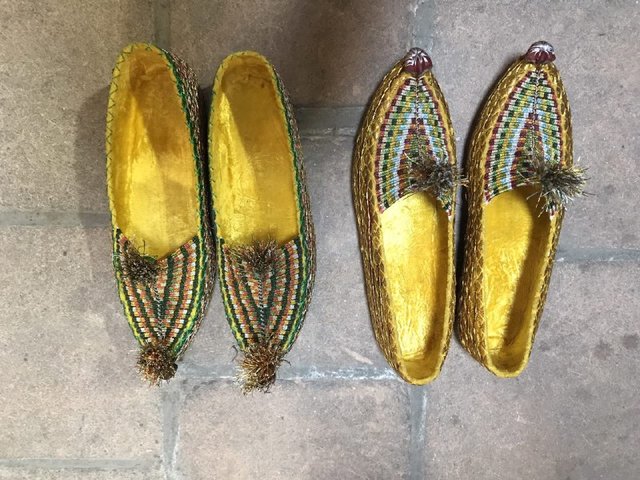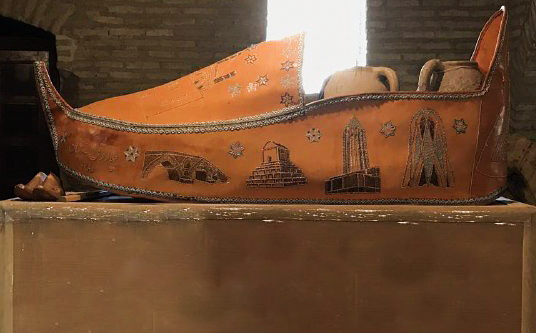Mard-Ali Heidari, an old artist and shoemaker, makes a highly valuable kind of traditional leather footwear in the northwestern Iranian province of Zanjan.

Some 41 years have elapsed since Heidari sewed his first pair of Charouq and now, after all these years, he is still practicing the same profession and has, so far, as a maestro, taught the art to 314 individuals, most of whom are women.
Born in Salmanlu village in Zanjan province in 1956, Heidari lost his father when he was only seven years old and began sewing Charouq in a small shop in the bazaar of his village. There, he used to straighten up curved nails on the shoe soles and heels or wax the threads for shoemaking.
After years of learning the art from the great maestros of his time, he decided to become independent and start his own business.
After a few years of working independently, in 2000, Iran’s Handicraft Organization – which was later merged into the Cultural Heritage, Handicrafts and Tourism Organization of Iran – called upon him to take part in the first Iranian Handicrafts Exhibition held on the sidelines of the 14th General Assembly of the World Crafts Council in Paris, France.

In a Farsi interview with ISNA, he, who still wears Charouq, said, “I have perfected the art of making Charouq. I mean I have sewn any form and type of Charouq [one can think of]. However, I cannot work with the same energy I did in the past and spend most of my time teaching the art.”

He has compiled a collection of the photos of his artworks. His works are spectacular. Some of them, worth between $570 and $1,140, are ornamented with filigree designs and some are trimmed with braid. These works very popular with foreign tourists.
Expounding on the properties of Charouq and advantages of wearing this kind of footwear, Heidari said, “Since Charouq is made of natural leather, it absorbs foot sweat. These days, shoes are mostly made of plastic which fails to absorb the sweat. Thus, all the perspiration is sent into the texture of socks.”
World’s Biggest Hand-Made Shoe
He has also sewn the world’s largest Charouq with a length and height of 160 centimetres and 70 centimetres in 18 months. To create the work of art he has used 10 square metres of leather, 500 grams of silk and four kilograms of glue.

On the reason of sewing such a big Charouq, he said, “Women usually throw away their Charouqs after wearing it for a while. Since it is highly likely that no trace of the art would remain or be found in Zanjan province within the next 100 years, I felt the need to sew a decorative Charouq that endures for a long time.”
Heidari, who etches his name on all of his artworks, added, “Charouq is made both for men and women. The ones sewn for women have heels as well as more ornaments on them.”
